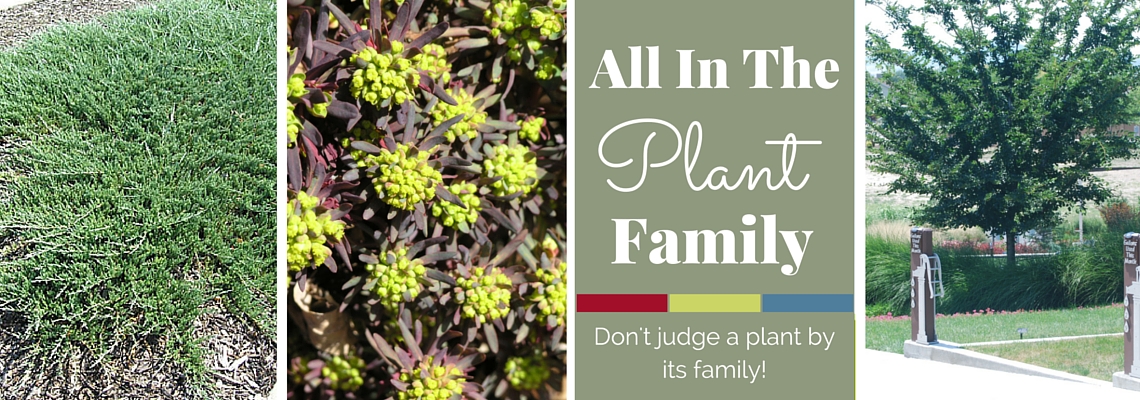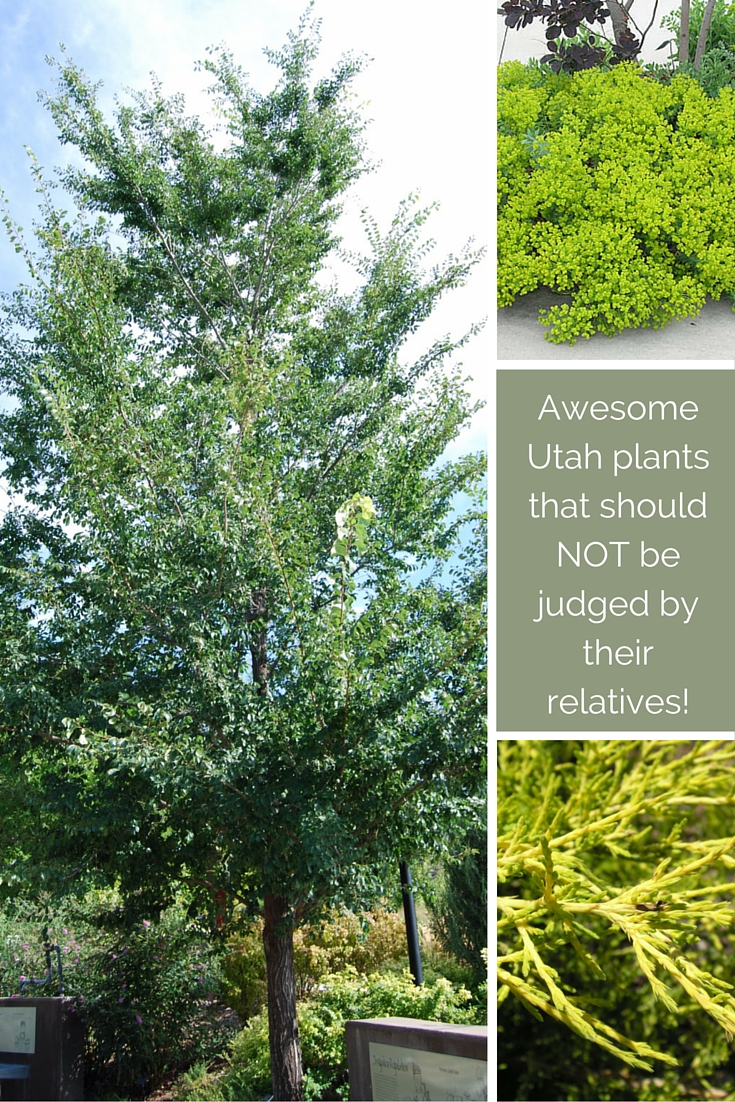
All in the Plant Family
-

There are many plants out there that when we hear their name we cringe. Juniper, juniper, juniper! Certain varieties or cultivars of different plant species have given the group as a whole a bad rap. Hopefully this article will shed a little light on some varieties that actually are great plants and have wonderful applications in the landscape despite their unruly brothers and sisters.
-

-
Elms
We all despise Siberian Elms and all the seedlings they put down and how vigorous they grow despite our efforts to get rid of them. However, there are cultivars of Elms that do quite well in our climate and that are beautiful tree specimens. Ulmus parvifolia ‘Frontier’, Frontier Elm, has dark green foliage that turns a deep purplish red in the fall. The ‘Frontier’ Elm grows in an attractive vase shape that makes it a great tree for any place in the landscape that low hanging branches would be undesirable.
Another Elm that does great in Utah is Ulmus carpinifolia ‘Homestead’. The ‘Homestead’ Elm is Dutch Elm Disease resistant and also has a beautiful dark green foliage and is fast growing. If you are trying to achieve a mature look quickly, these Elms are worth considering. The ‘Homestead’ Elm’s leaves turn a bright yellow in the fall instead of the purple but both trees add fall interest. -

-
Junipers
Due to the over planting of Juniperus chinensis ‘Pfitzeriana’ better known as the Pfitzer Juniper, junipers have gotten a bad rap. Despite the mass overplanting of them, Junipers are great plants when used in the correct application. They are extremely low water and thrive in our climate. Blue Star Juniper is a great specimen. It can be used as groundcover, in rock gardens, or as a low border plant. The Blue Star looks great next to plants with colorful foliage, like a Ninebark, and adds texture to your space. Another variety called Sea of Gold, which has a magnificent chartreuse color, can be used as a specimen plant and will give year round color and interest.
-

-
Euphorbia
The wrong types of Euphorbia are actually an invasive species here such as Euphorbia esula, Leafy Spurge or Myrtle Spurge. Although this particular variety of Euphorbia is a problem it doesn’t mean we can’t plant other varieties of Euphorbias. In fact, there are many varieties that do well and will not take over the landscape. Blue Haze Euphorbia does not need large amounts of water to survive and has beautiful blue green colored leaves and bright greenish yellow flowers in the summer. Ascot Rainbow Spurge is another Euphorbia that is heat and drought tolerant with prolific blooms. It has striking lime green foliage that is edged in yellow borders and would add character to any garden.
There are good and bad varieties of many different plant species and it would be a shame to judge the whole family by a few unruly relatives! You never know when you may be missing out on the perfect plant addition to your garden.
-


